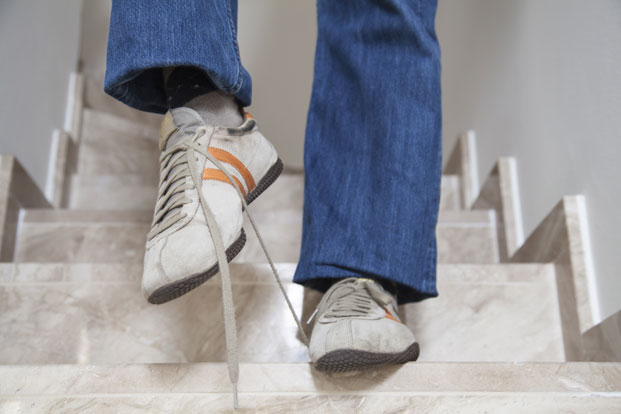Everyone slips and falls on occasion. But some people — particularly as they reach their senior years — develop problems with balance that can seriously impact their lives.
The National Institutes of Health estimate that 14.8 percent of American adults (about 33 million people) had a balance or dizziness issue in the last year.
Balance is so much a part of daily life that we can take its benefits for granted. Staying upright prevents injury, allows for walking and driving, provides access to daily living activities and allows socialization in public spaces. In short, it’s one of the vital senses, which is why deterioration in the ability to remain upright can be so devastating. Good balance is defined as the ability to walk without staggering, get up from a chair without falling, climb stairs without issues and bending over without falling.
Problems with balance range from simple dizziness and lightheadedness to an inability to maintain enough balance to navigate the world safely. When issues with balance occur, they are typically signs of major medical issues and can indicate problems with blood and heart vessels, muscles, bones, joints, the inner ear, vision, hearing, or the central nervous system.
Types of Balance Issues
A number of balance-related conditions may be at work when someone is constantly klutzy. Vertigo is a general definition for a condition that causes people to feel like they are in motion or experience a sense of spinning. Some potential causes of vertigo:
Other Causes of Imbalance
Not every problem with balance originates in the inner ear. Some can be caused by conditions that occur in other parts of the body.
Some situations in which balance may be affected include:
Disequilibrium is a feeling of being out of balance, causing most people to lose their footing while walking. This can be caused by:
Finally, several conditions may cause lightheadedness. These include inner ear problems; psychiatric disorders stemming from depression, anxiety disorders or other issues; hyperventilation, which is rapid breathing that can induce lightheadedness; and certain medications.
Diagnosing a Balance Disorder
Doctors who specialize in ear, nose and throat conditions are generally the first stop for diagnosis of balance problems. But brain and nervous system specialists may be needed for evaluation as well.
Doctors generally conduct an overall physical examination to pinpoint the cause of the balance issues. After that, testing can include vestibular tests to determine potential problems in the inner ear; hearing tests to evaluate ear function; posturography testing, which monitors parts of the body that play a part in balance; electronystagmography and video nystagmography, which analyze eye movements, a key indicator of balance problems; a rotary chair test, which analyzes eye movements in a computer-controlled chair that will move slowly in a circle; and a Dix-Hallpike maneuver, which turns the head in different positions while monitoring eye movements.
A vestibular evoked myogenic potentials test also may be administered. It uses sensor pads attached to the neck, forehead and under the eyes to measure muscle contractions in reaction to sounds; and imaging tests, which may include CT, MRI or other imaging to determine whether your brain may cause balance issues.
Finally, blood pressure and heart rate will be monitored for issues that cause balance problems.
When the medical issue is pinpointed, therapy can include undergoing balance retraining, which includes certain exercises that can help you recover some balancing skills. Some patients may start to use a cane or walking stick as part of the rehabilitation and may have the home evaluated for potential hazards that could cause serious injury.
Patients may also be advised on diet and lifestyle changes. Some people have balance issues caused by salt intake, alcohol, nicotine or chocolate. Eliminating or cutting back on these may help restore some balance function.

Leave a Reply